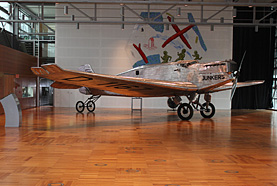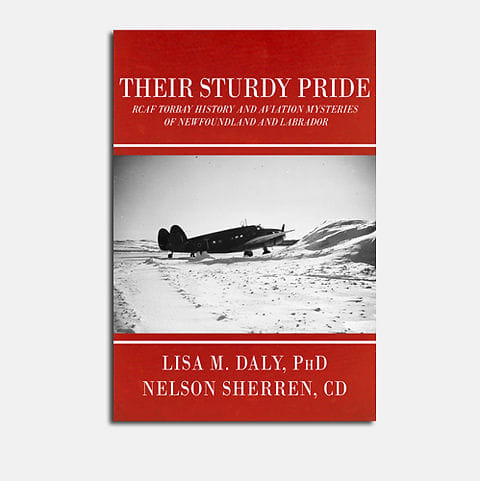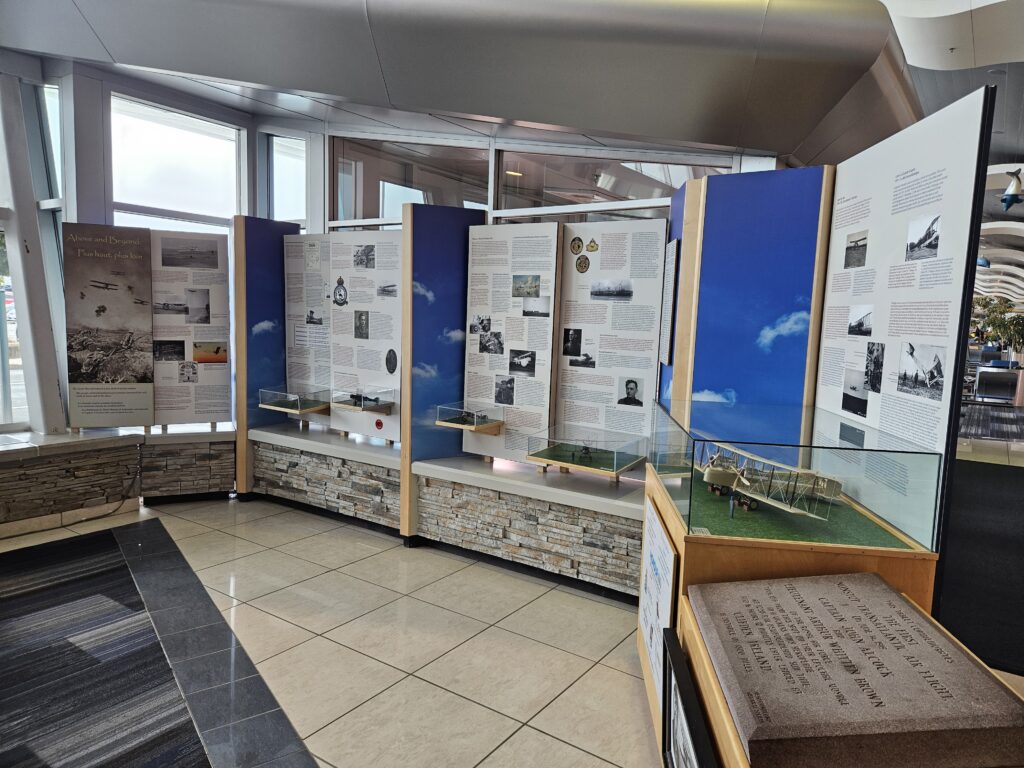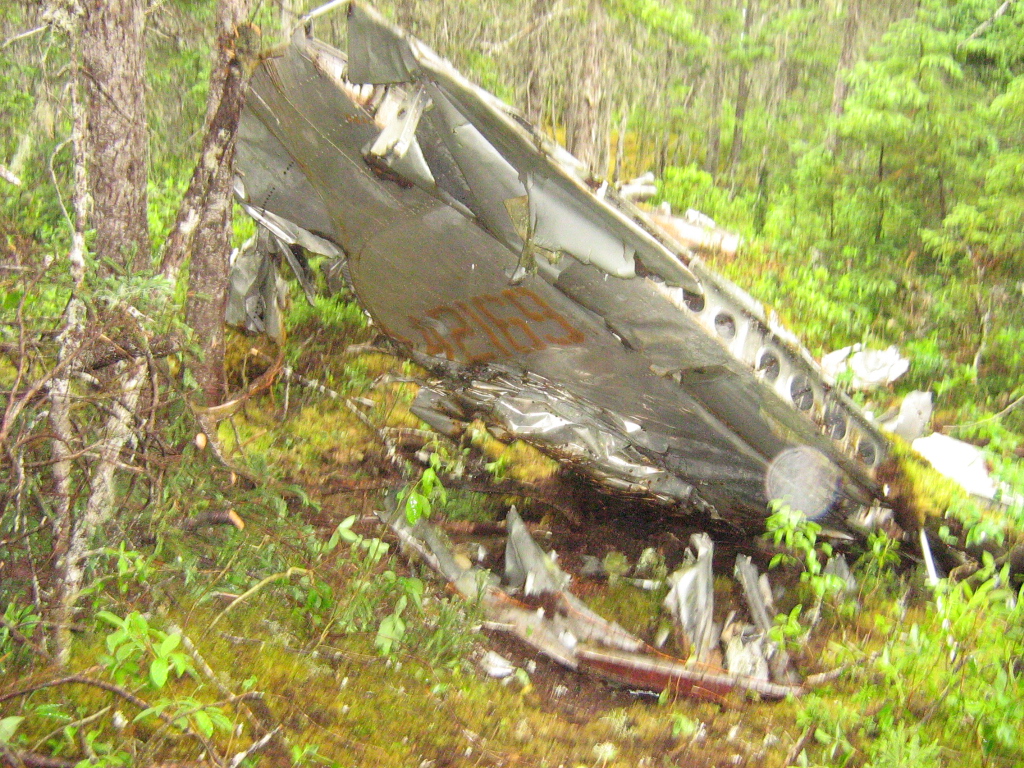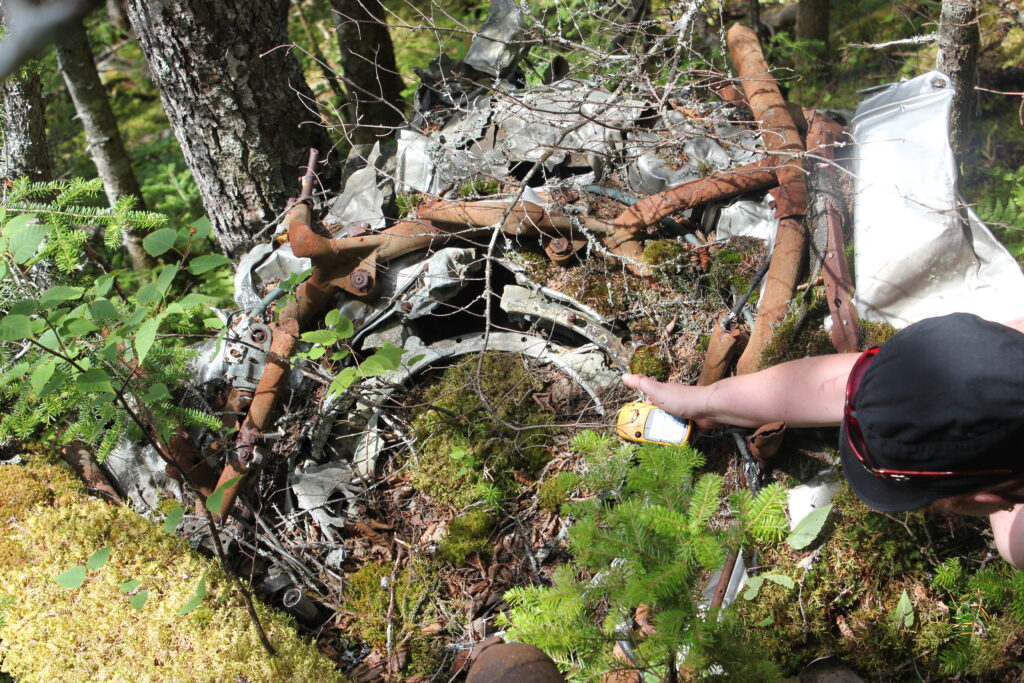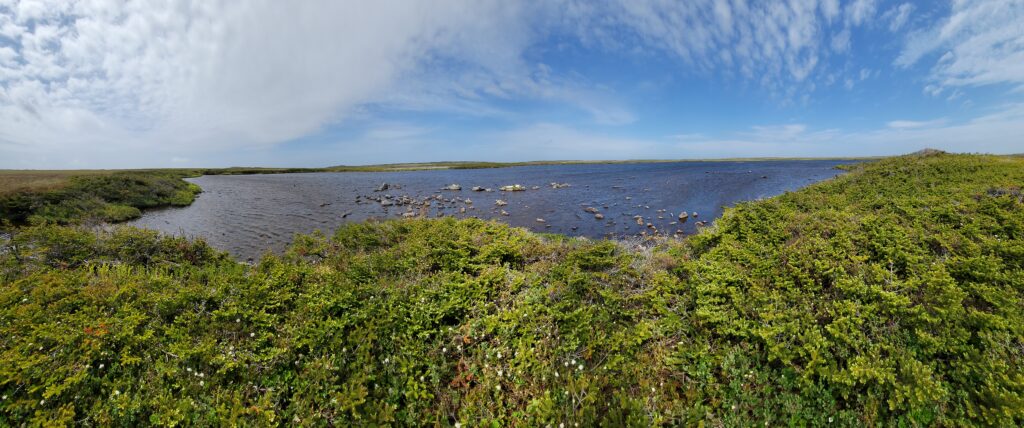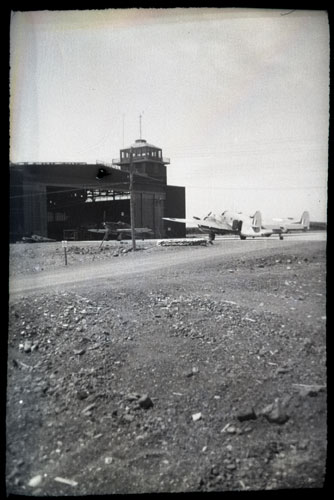My website is back up and running, and I have a few things to update everyone on before we get into another history. First, I have had an article published in the Journal of Newfoundland and Labrador Studies, volume 38, number 1, 2024 called At War, but Far From the Front: Crashes, Disasters, and The Newfoundland Airport. And while you’re there, check out the article A Brief History of Disaster Response and Recovery Efforts at the Newfoundland/Gander International Airport 1941-1985 by Betty Mullaly-Moulton and Emily Doyle. Both articles are free to read.
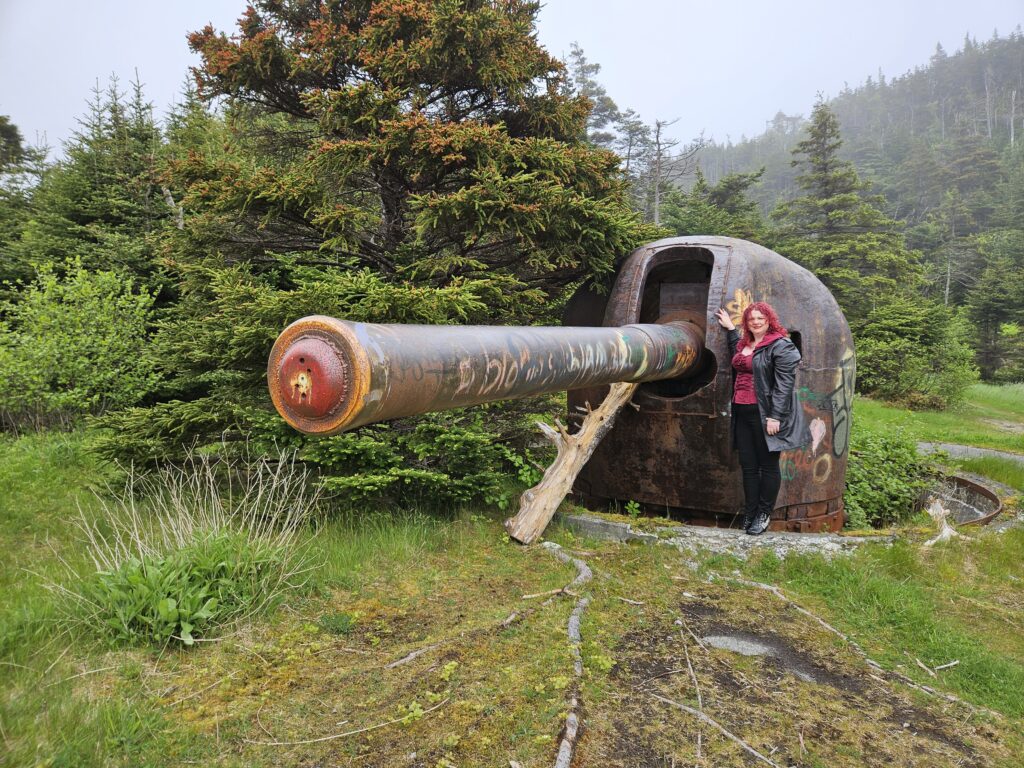
I was also interviewed for a Quebec-based documentary series 39-45 en sol canadien back in June, and the episode aired this past December. The episode L’invasion amicale de Terre-Neuve is all about Newfoundland and Labrador’s role in the Second World War. It’s season 3, episode 13, and while I spoke French throughout the interview, I believe at least two of the other experts interviewed speak English.
This morning, I woke up and started reading some NQ articles pertaining to the International Grenfell Association to get myself in the mind-space to start editing something on that topic. And in the first article, Picturing the International Grenfell Association by JTH Connor and Jennifer J Connor, the authors are dating a pictorial map. Two aviation events helped them find the date: the flight of the Bremen in 1928, and the description of Grand Falls (now Churchill Falls) as “Twice as high as Niagara Falls.” According to the article, that is how Harold G. Crowley, the pilot that flew over the falls, described them. In fact, what he says in his 1933 article To Grand Falls By Air is “there are waterfalls twice as high as Niagara and the newness of the country is not the Maine or New Brunswick kind of virginity. No axe has ever been there, and when one will get in there is questionable.”

Which brings us to the other aviation note on this map, the landing of the Bremen in 1928. After leaving Baldonnell, Ireland, in a “perfect” takeoff in favourable weather on 11 April, the Bremen landed on Greenly Island in the Strait of Bell Isle, on the Quebec side of the Quebec/Labrador border, on 13 April 1928, making it the first westward crossing of the Atlantic by airplane (the first westward crossing was the airship R34 which crossed in 1919). The aviators, Germans Hermann Koehl and Baron von Huenefeld, and Irish Col. James J. Fitzmaurice, had been in the air for 36.5 hours before landing on a peat bog, damaging the Junkers aircraft.
According to later reports, the flight started well, with a perfect start from Baldonnell Field in Ireland. The aircraft “functioned splendidly” and on schedule to arrive in New York. The winds were favourable until about 900 miles off the coast of Newfoundland. Conditions changed and they encountered a blizzard “which lashed the machine from right to left”. They found it hard to keep going. For hours, “the aviators frankly expected every minute to be their last.” With their visibility poor, they both lost their bearings and found that their compass was inaccurate. Their lighting system failed, and they had to fly blind. Koehl was the one piloting, and he had no idea where they were. He “trusted to luck” and attempted to fly to Cape Race. They estimated that they had been blind for more than 400 miles. When daylight broke, they could read their compass again and saw that they were heading generally west. As the day continued, they started to run low on fuel, both due to the blizzard and because they were zigzagging to try to stay on route. At about this point, they gave up on New York, especially when they hit dense fog. They tried to fly around the fog, but couldn’t. They ended up on Greenly Island because they mistook a lighthouse for a steamer frozen in the ice. They broke through the fog and landed in the bog (or as they refer to it, a pond as it did have a surface of ice on it), damaging the aircraft. von Huenefeld quipped that he was so unsure that they would reach land that he was “ready to shoot his companions if the worst came to the worst.” The landing was perfect, but the ice on the bog was not strong enough to hold the aircraft and it broke through.
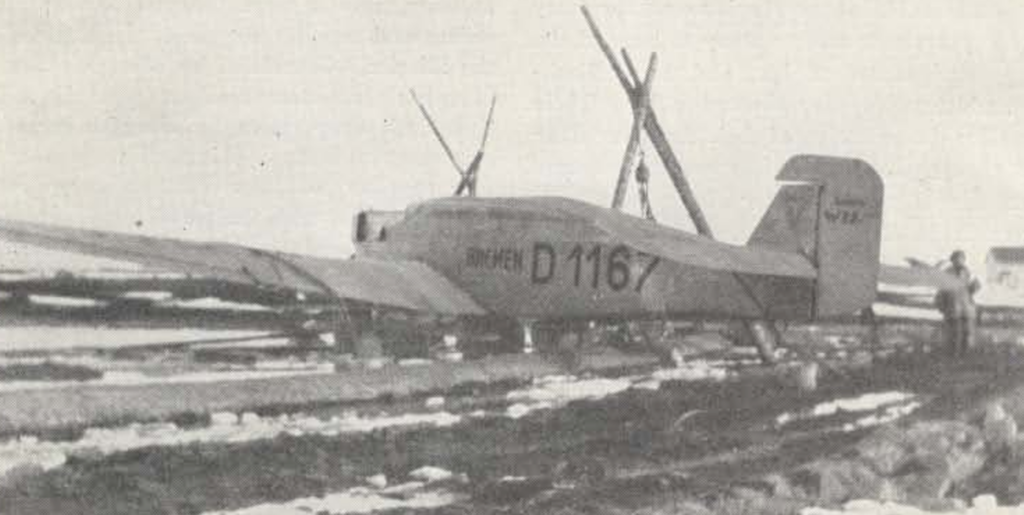
Once landed, von Huenefeld made his way to the lighthouse, and was given dry footwear and offered food, but he refused food until his fellow aviators left the aircraft. Once together, they had a meal of biscuits and fresh milk, but all were anxious about being in Labrador and not New York. They were pleased to have made the journey, so were, at the same time, “modest and most thankful to have accomplished such a feat.”

The authorities were alerted by a telegram sent from Point Amour reading “German plane at Greenly Island, wind S.E. with snow storm.”
Ships sailing on the expected route for the Bremen didn’t report any official sightings. One unauthenticated report was mentioned in an article in The Evening Telegram, but the name of the ship, nor the time, was stated. Twenty-four ships were reported to be along the route. The Daily News reported that when the aircraft hadn’t shown up in New York as expected, there were sightings reported at the Bay of Fundy, Corner Brook, and other areas, which could not have been true as the aircraft was much further north. This is interesting because it is something that comes up again and again in the search for missing aircraft. I explore some of this in Their Sturdy Pride, which looks at the disappearance of L’Oiseau blanc and The Dawn, both of which had sightings in numerous locations between Labrador, Quebec, and Maine, and researchers often decide for themselves which sightings should be taken seriously and base where to search on these sightings.
The cold weather was a concern while the aircraft waited to be repaired. To prevent ice forming and further damaging the aircraft, its wings were being coated with glycerin or paraffin.
Much like when The Lady Peace landed in Musgrave Harbour, aircraft with repair materials and fuel and other aircraft with reporters went to meet the aircraft. One report suggests as many as 60 journalists visited the small island. The Canadian icebreaker S.S. Montcalm was going to meet the aviators, but by 15 April was stuck in the ice and had to wait for a change in the wind. The Irish Free State Government did ask for the government of Newfoundland to send aid, but as the Montcalm was already the closest vessel, St. John’s said that they wouldn’t be able to get any relief there before the Montcalm, and also that the aircraft had landed in Canadian territory.
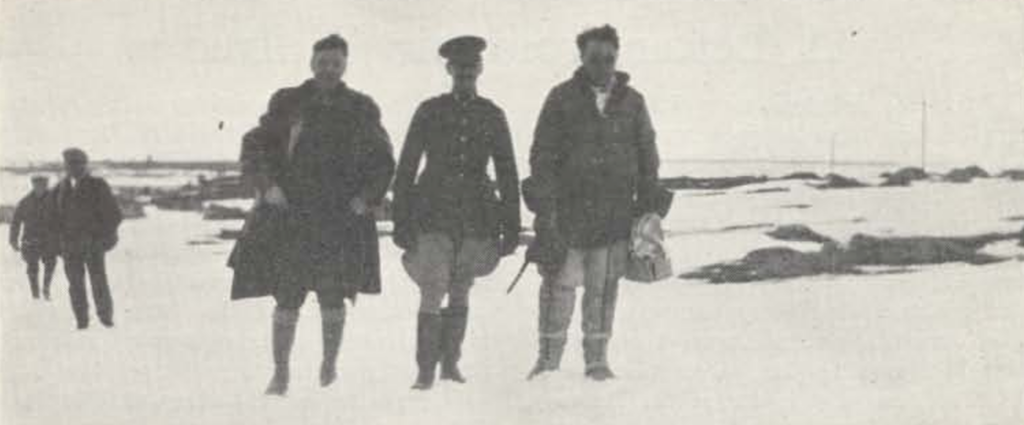
Two days after the aircraft landed, Duke Schiller arrived in a relief aircraft, and two days after that, a second relief aircraft from the Canadian Transcontinental Airways Company (GCA-IP) from Murray Bay brown by Romeo Vachon arrived with a new propeller. Both aircraft were Fairchild FC-2W. A report on 16 April by the Canadian Press said that the aircraft only hand a damaged shaft or axle and that it was reparable, but also needed more parts necessary to make those repairs. A report the following day said the Bremen needed a new undercarriage and other equipment. It also seems that the propeller wasn’t the right size, and the team had actually tried to straighten the original propeller, but they still could not get the aircraft into the air. They may even have tried to get the aircraft into the air, but it crashed again, may be why it needed a new undercarriage. To get the parts, Fitzmaurice left the team to take the relief plane to Quebec. Fitzmaurice planned to stay in Quebec and to be picked up on the way along once the Bremen was repaired.
What is really interesting is the International Grenfell Association connection to the flight, that also brings us back to the map in the original NQ article I was reading this morning. On 15 April 1928, Greta Mae Ferris and Mrs. Wedderburn of the International Grenfell Association, and Thomas J. Wyatt, light keeper for Point d’Amour, went to Greenly Island to interview the aviators. They travelled from the mission station at Blanc Sabon by dog sled to Greenly Island. When they arrived, the relief plane had also just arrived, so, after seeing the aircraft, the IGA team went to the Greenly Island lighthouse to wait for aviators. They waited a while, and when they went to find the aircraft crews, they found them on their way to the lighthouse. The crews talked about their plans for while, and after a little while, one of the inhabitants of the lighthouse encouraged Wyatt to play the fiddle, though it is unclear if he did because he did protest a little, feeling it was “neither the time nor place.”
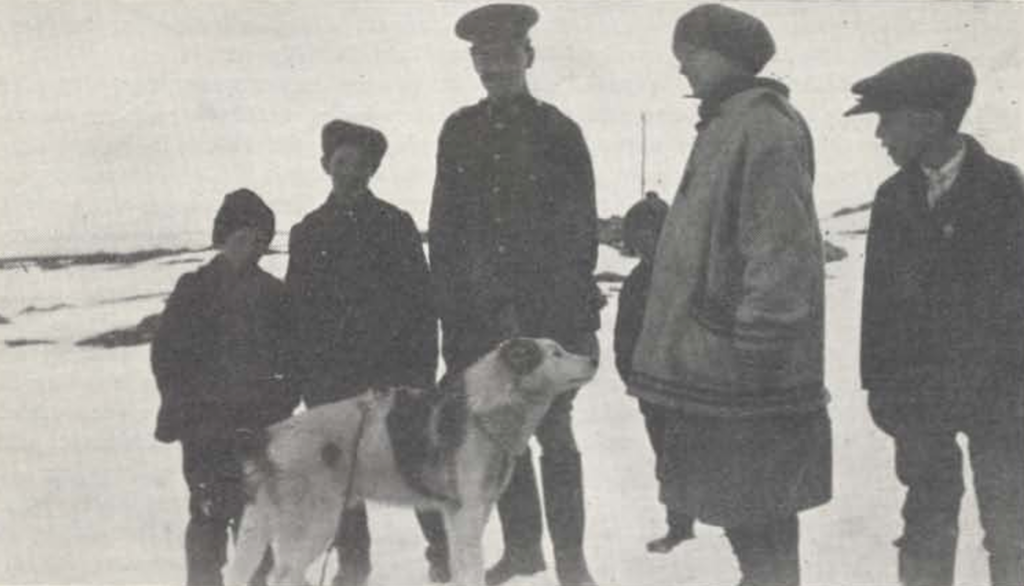
Eventually, Ferris and group broke into the ongoing conversation and asked for autographs. Ferris notes “I think they would have given almost anything to get rid of us, but we stuck.” They left soon after, and the next day sent out reports over the wireless.
To show appreciation for Ferris, in New York on 26 April, a matinee of the Labrador sea hunt conducted by Grenfell was to be aired. The proceeds of this matinee would go to Ferris for bringing supplies and medicine, and for her report and interview that she shared with the press.
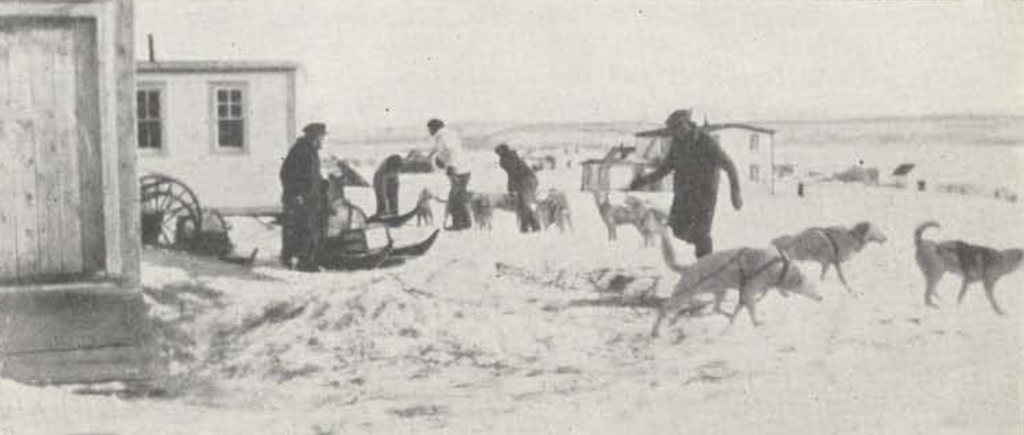
While this was going on, the Montcalm remained stuck in the ice about 100 miles from the aircraft. As well, as word got out, the plane had more visitors, with some residents of Flowers Cove visiting to see the plane and to get some more autographs.
By 17 April 1928, it seems to have been decided the the Bremen was beyond repair. The aircraft that had returned to the island with repair equipment would instead take the aviators to New York and the Montcalm would take the aircraft itself to Halifax for repair. On 20 April 1928, the plan changed to a tri-motored Ford aircraft to be flown from Detroit to Greenly Island by Bernt Balchen and Floyd Bennett to offer repair parts of relief supplies. The airplane hopped to Murray Bay, and took Fitzmaurice back to the Bremen. By 26 April 1928, the Bremen crew, but not the aircraft, were in Murray Bay and celebration plans were underway in New York for when the aviators arrived. As for the aircraft, It was decided that the Bremen would not be able to get off the island using wheels on ice, so, instead it was going to be dismantled and shipped away.
Sometime while the Ford airplane was on Greenly Island, Ferris returned to take pictures of both the Bremen and the Ford. She did get some handshakes, but Koehl and von Huenefeld were pushing the Bremen to Long Point, where they felt the aircraft would be safe in case the ice went out.
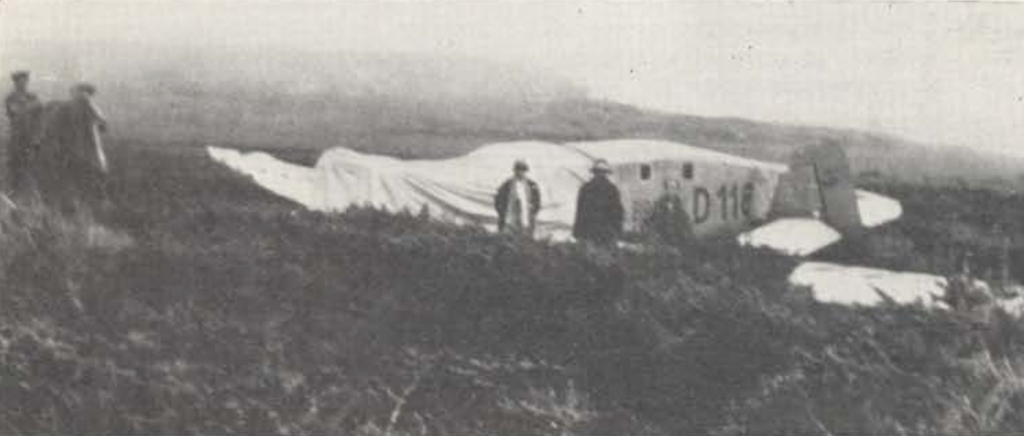
The Canadian Press reported on 20 April that the Ford aircraft was bring flown by Bernt Balchen (often written as Bert in newspaper articles) and Floyd Bennett, but then on 23 April, the Canadian Press reported that the aircraft flown from Detroit to Murray Bay was being flown by Clarence Chamberlain. It does well to note that sometimes, especially with exciting events in remote areas such as Greenly Island, information can get garbled. Later, in another report in The Daily News, It was reported again the Bernt Balchan was the one flying the aircraft from Detroit. Floyd Bennett was on the flight with Balchan, as the pneumonia Bennett was already suffering from worsened during the rescue and he died in Quebec City on 25 April 1928. The celebrations for the Atlantic crossing of the Bremen did seem to be delayed so the aviators could attend Bennett’s funeral at Arlington National Cemetery. Bennett was buried on 27 April 1928, and the Bremen aviators were guests of the United States Army while in Washington. They returned to New York shortly after.
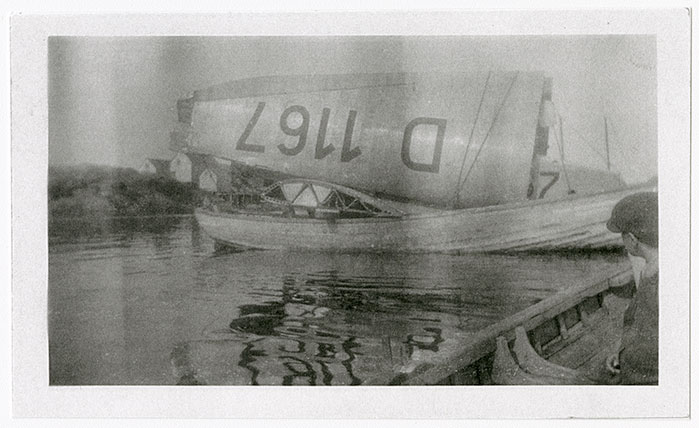
Like so many other aviators before and after, there was a mascot on the Bermen as well. Koehl had a black pig that was given to him in Berlin. The aircraft crashed, but the aviators were uninjured and had successfully made the flight. Given that other aircraft had gone missing in the year before this flight, it was a fortunate journey.
Sources:
Anonymous (1928). Broadcast Welcome To Bremen’s Crew. The Daily News, 25 April 1928: 15.
Anonymous (1928). German Plane First to Make East to West Atlantic Flight: Bremen’s Crew Safe Near Blanc Sablon. The Daily News, 14 April 1928: 1.
Anonymous (1928). Latest Report Says Bremen Will Not Fly From Greenly Island. The Daily News, 25 April 1928: 1.
Anonymous (1928). No title. Among the Deep Sea Fishers, 26(1): 45.
Canadian Press (1928). Absence of News of German Plane. The Evening Telegram, 13 April 1928: 3.
Canadian Press (1928). Aviator Bennett Buried with Honors. The Daily News, 28 April 1928: 1.
Canadian Press (1928). Bremen’s Crew Reach Murray Bay. The Daily News, 27 April 1928: 1.
Canadian Press (1928). Bremen’s Pilot Flew Blind Thursday Night When Lights Failed. The Daily News, 19 April 1928: 1.
Canadian Press (1928). Grenfell Nurse Gives Graphic Story of End Bremen’s Great Flight: Airmen Took Lighthouse for Icebound Steamer. The Daily News, 18 April 1928: 1.
Canadian Press (1928). Huge Ford Plane May Take Bremen’s Crew. The Daily News, 21 April 1928: 1.
Canadian Press (1928). Irish Airman on Way to Quebec. The Daily News, 17 April 1928: 1.
Canadian Press (1928). Relief Plane Lands at Greenly Island. The Daily News, 25 April 1928: 1.
Canadian Press (1928). Reports Assert Bremen to Continue Flight After Repairs Made: Relief Plane Lands at Greenly Island. The Daily News, 16 April 1928: 1.
Canadian Press (1928). The Junkers Plane “Bremen” Off on Flight to New York. The Evening Telegram, 12 April 1928: 3.
Connor, JTH, and Jennifer J. Connor (2023). Picturing the International Grenfell Association. NQ, 116(2): 16-25.
Crowley, Harold G. (1933). To Grand Falls By Air. Among the Deep Sea Fishers, 30(4): 172-173.
Ferris, Greta Mae (1928a). The Landing of the Bremen. Among the Deep Sea Fishers, 26(2): 58.
Ferris, Greta Mae (1928b). The “Bremen” Incident. Among the Deep Sea Fishers, 26(3): 108-109.
